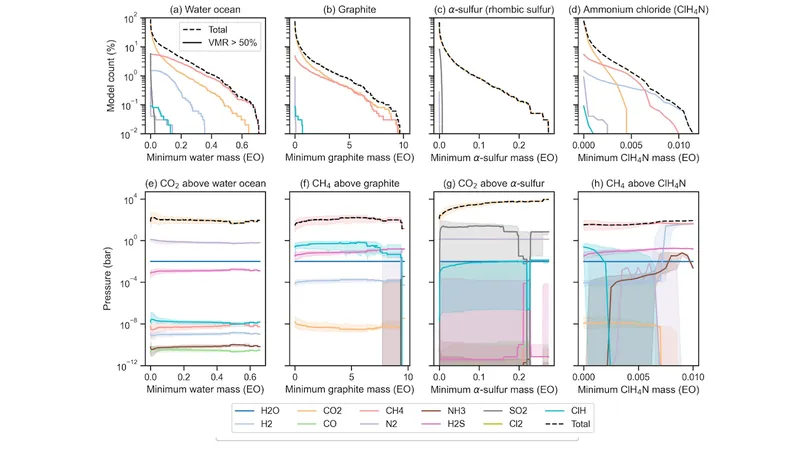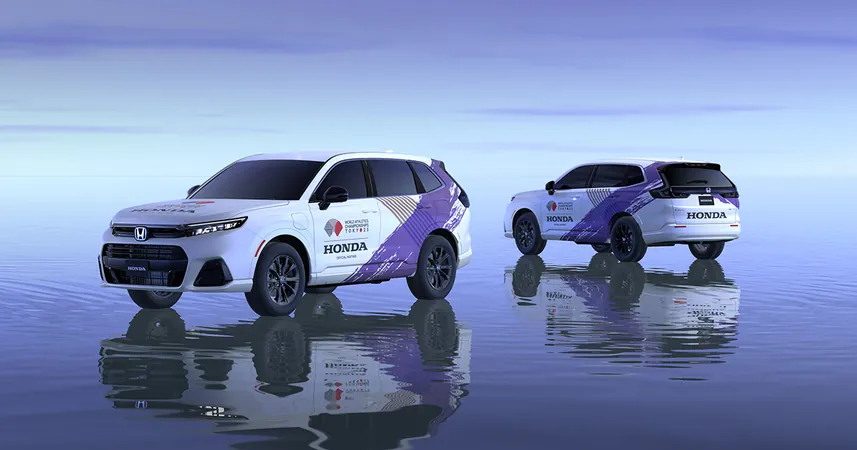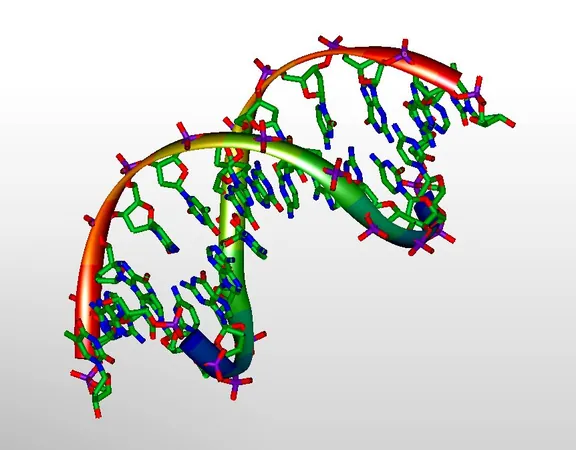
Unlocking the Secrets of Exoplanetary Atmospheres: Insights from TRAPPIST-1
2025-07-06
Author: William
Understanding Exoplanet Atmospheres
To truly grasp the nature and evolution of low-mass rocky exoplanet atmospheres, especially those like TRAPPIST-1e, scientists are diving into groundbreaking research that unpacks their complexities.
The Magma Ocean Stage
During the initial magma ocean phase of planets, a fascinating exchange occurs between the planet's molten insides and its atmosphere. This stage is critical as the volatile elements and chemical reactions determine the atmosphere's make-up. Key factors include the planet's volatile budget, solubility of gases in magma, and various chemical equilibria.
Innovative Simulations with Atmodeller
Enter Atmodeller, an open-source Python package leveraging JAX technology. This tool allows researchers to simulate planetary conditions resembling those of TRAPPIST-1e and K2-18b, leading to pivotal discoveries about their atmospheres.
CO-Dominance in TRAPPIST-1e Atmospheres
For planets similar to TRAPPIST-1e, simulations reveal that carbon monoxide (CO) prevails in their primordial atmospheres. As these planets cool, their atmospheres transform into CO2-rich environments, showcasing pressures that can reach hundreds of bars at approximately 280 K. Intriguingly, nearly 40% of scenarios predict the presence of liquid water, graphite, sulfur, and ammonium chloride—crucial components that hint at habitability!
The Sub-Neptune Surprise
In the realm of sub-Neptune gas dwarfs, the dynamics shift. At pressures soaring into the gigapascal range, gas behavior diverges from the norm, resulting in heightened solubilities and lower atmospheric pressures than expected. This phenomenon could lead to methane-rich atmospheres for specific pressure and composition conditions.
Hydrogen’s Dominance at Lower Pressures
Conversely, at decreased pressures or heightened hydrogen-to-carbon ratios, molecular hydrogen remains the dominant atmospheric component. Regardless of the conditions, high temperatures tend to increase carbon to hydrogen ratios in atmospheres—further complicating our understanding.
Scientists Leading the Charge
This exciting research led by Dan J. Bower and colleagues offers a fresh lens on exoplanet atmospheres, pushing the envelope of what we know about potential habitability on worlds far beyond our own. The quest to understand our cosmic neighbors is on!









 Brasil (PT)
Brasil (PT)
 Canada (EN)
Canada (EN)
 Chile (ES)
Chile (ES)
 Česko (CS)
Česko (CS)
 대한민국 (KO)
대한민국 (KO)
 España (ES)
España (ES)
 France (FR)
France (FR)
 Hong Kong (EN)
Hong Kong (EN)
 Italia (IT)
Italia (IT)
 日本 (JA)
日本 (JA)
 Magyarország (HU)
Magyarország (HU)
 Norge (NO)
Norge (NO)
 Polska (PL)
Polska (PL)
 Schweiz (DE)
Schweiz (DE)
 Singapore (EN)
Singapore (EN)
 Sverige (SV)
Sverige (SV)
 Suomi (FI)
Suomi (FI)
 Türkiye (TR)
Türkiye (TR)
 الإمارات العربية المتحدة (AR)
الإمارات العربية المتحدة (AR)